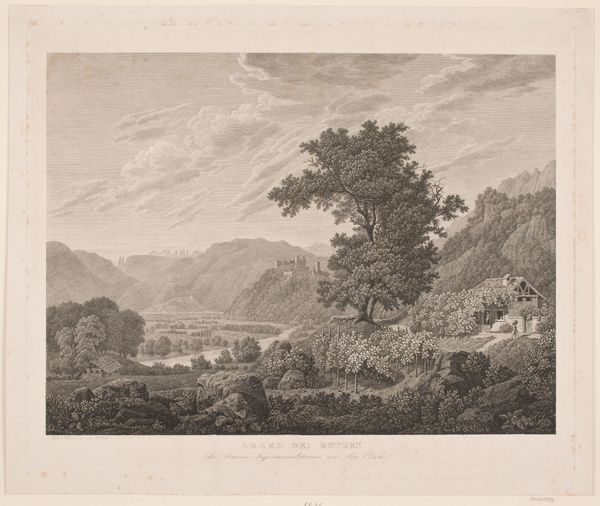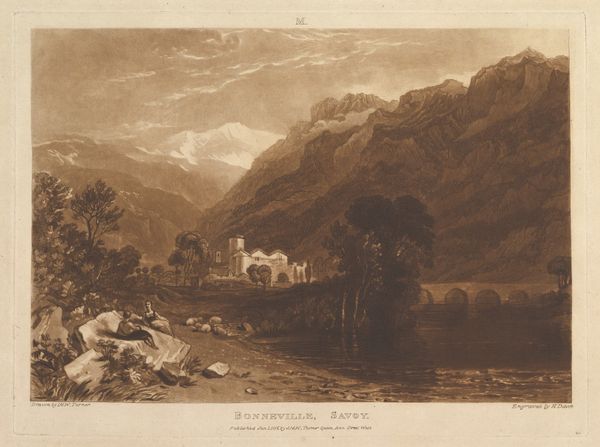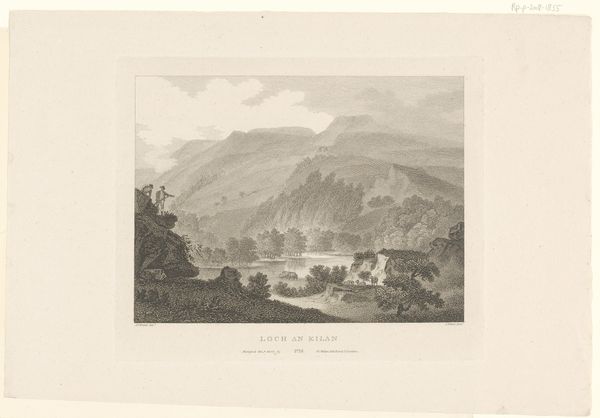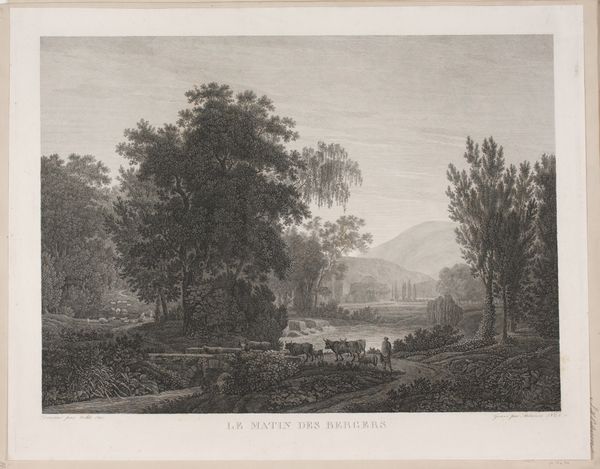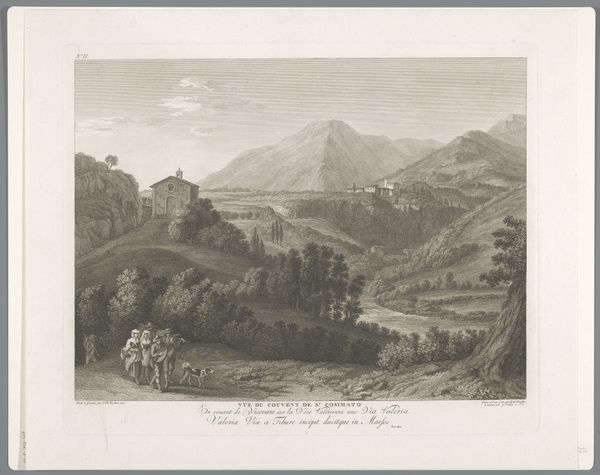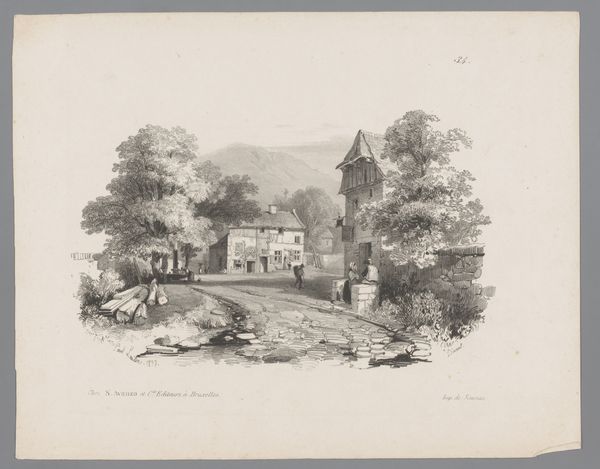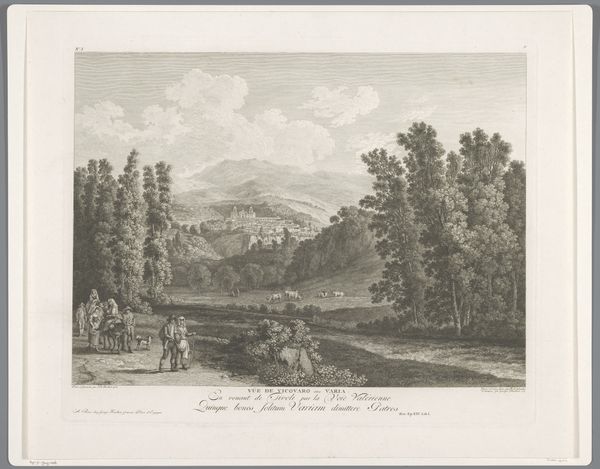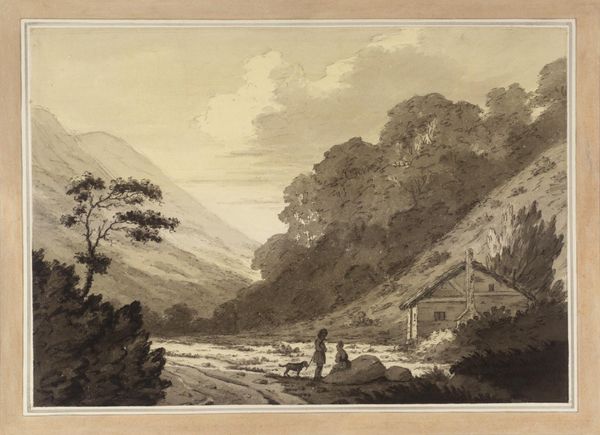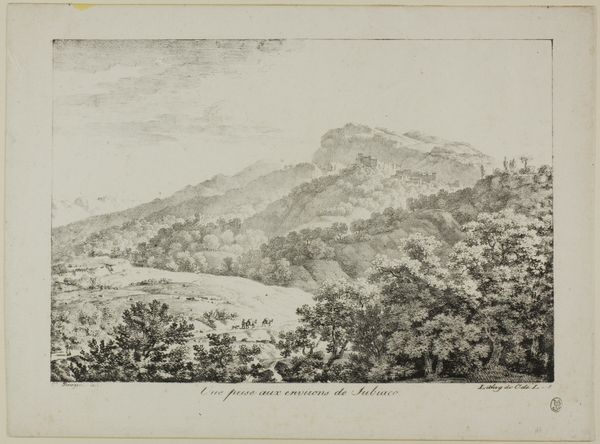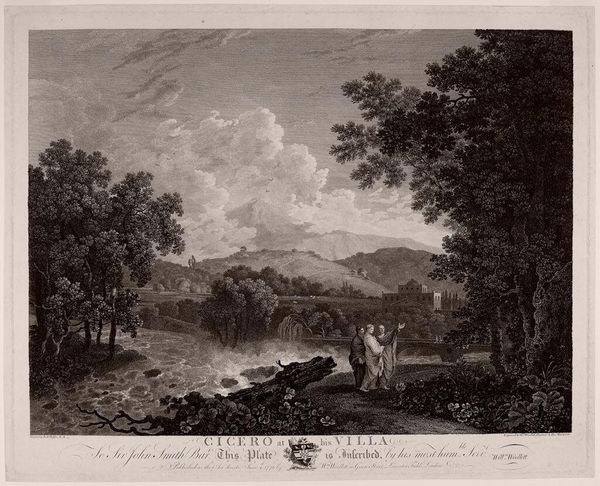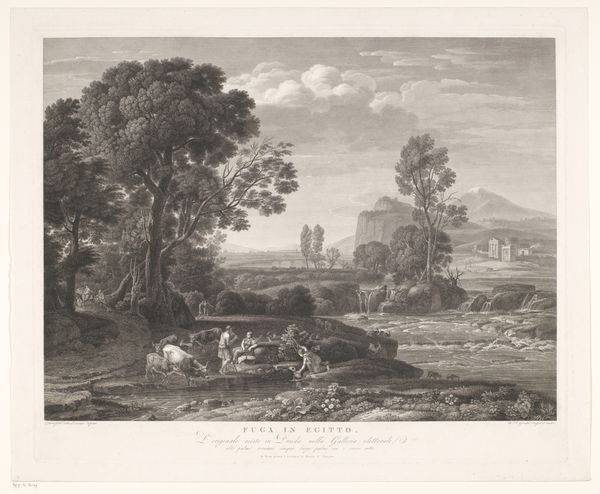
drawing, lithograph, print, paper, engraving
#
drawing
#
lithograph
# print
#
landscape
#
paper
#
romanticism
#
cityscape
#
academic-art
#
engraving
Dimensions: 129 × 196 mm (image); 186 × 273 mm (sheet)
Copyright: Public Domain
Editor: Here we have "Palace of Escurial," a lithograph by James Duffield Harding from 1824. It has a certain stillness to it, a kind of captured grandeur. What do you see in this piece? Curator: I see more than just a pretty picture; I see a complex visual statement rooted in power and privilege. The Escurial, of course, was built by Phillip II, a stark symbol of the Spanish monarchy's absolute authority. What stories are not told within those stone walls? Editor: I hadn't considered the stories *within* the walls, I was just impressed by the facade. Curator: The artist gives us a picturesque landscape, framing this imposing structure within a natural, almost idyllic scene. What does this contrast achieve, do you think? Editor: Maybe it's trying to soften the edges, romanticizing the monarchy's presence? To kind of obscure the inherent disparities in wealth and status? Curator: Precisely! And that romanticizing gaze, prevalent in the art of this period, often obscures the realities of colonial exploitation that funded such grandeur. The print becomes a site of tension, reflecting not just beauty, but also the complex intersection of art, power, and the socio-political context in which it was created. Editor: It's amazing how much more I see now knowing that history. It’s more than just a landscape; it’s a loaded document. Curator: Absolutely! And thinking about who had access to these prints is also critical. Who was being encouraged to see the Palace, and for what reasons? Editor: Thanks! Now I understand the need to always question the narrative.
Comments
No comments
Be the first to comment and join the conversation on the ultimate creative platform.
